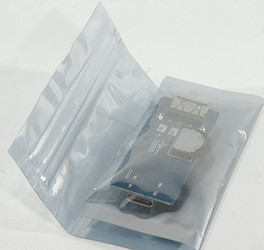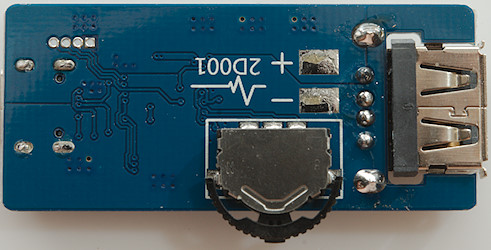USB-PD & USB-QC trigger 2D001

This device is a trigger to access QC and PD voltages from a USB-C power supply/charger.
I got it from Aliexpress dealer Great vendor

It arrived in an envelop packed in a plastic bag and without any documentation or cables.

The circuit has a microprocessor (ST32F030F4P6. ARM 16kB flash 4kB ram), a usb-c-pd interface chip (Marked PBAB/G7B) and a voltage regulator (MIC5233 3.3V). In addition to this a couple of leds and a switch with left/right and push function.
The Run led flashes when adjusting voltage or doing PD communication, if this fails the Fault led will turn on. The voltage leds will show selected voltage, but it will not be valid if the Fault led is on.

The switch can be moved left/right for voltage up/down and pressed to retry a QC programming. Double presses will switch between QC and PD mode.
Notice the +/- pad, they can be used for soldering wires to get voltage/current with lower series resistance then through the usb connector.




Measurements
- The trigger will remember selected QC or PD mode without power.
- The trigger will always start at 5 volt.
- The trigger will not work on all cables, I had one USB-C cable that would not do QC
- For maximum current check the specifications of the used power supply,
- Remember that standard USB-C cables are only rated for 3A.
- I have tested it with BlitzWolf BW-S10 and UGreen CD127, the both worked with both QC and PD.
- When using QC or PD, the other mode may be blocked until cable has been disconnected or power cycled (Led will show Fault).
Voltage drop at 1A, including one USB-C and one USB-A connector and cable:
Positive: 30mV -> 30mOhm
Negative: 24mV -> 24mOhm
Voltage drop at 1A on pads, including one USB-C connector and cable:
Positive 17mV -> 17mOhm
Negative: 10mV -> 10mOhm
In praxis the voltage drop will be higher than this, due to the power supply and the second USB-C connection
Conclusion
I like this trigger, it is very easy to use due to the switch and leds. The solder pads make it easy to connect DC plugs with pigtails to the trigger and for testing it gives a low impedance test point.
It can be used for testing USB-C power supplies, but also to convert a USB power supply into a more generic power supply.
But do never use it between your phone/tablet and a charger, it is an easy way to damage the phone/tablet, even if it support high voltage charging!







